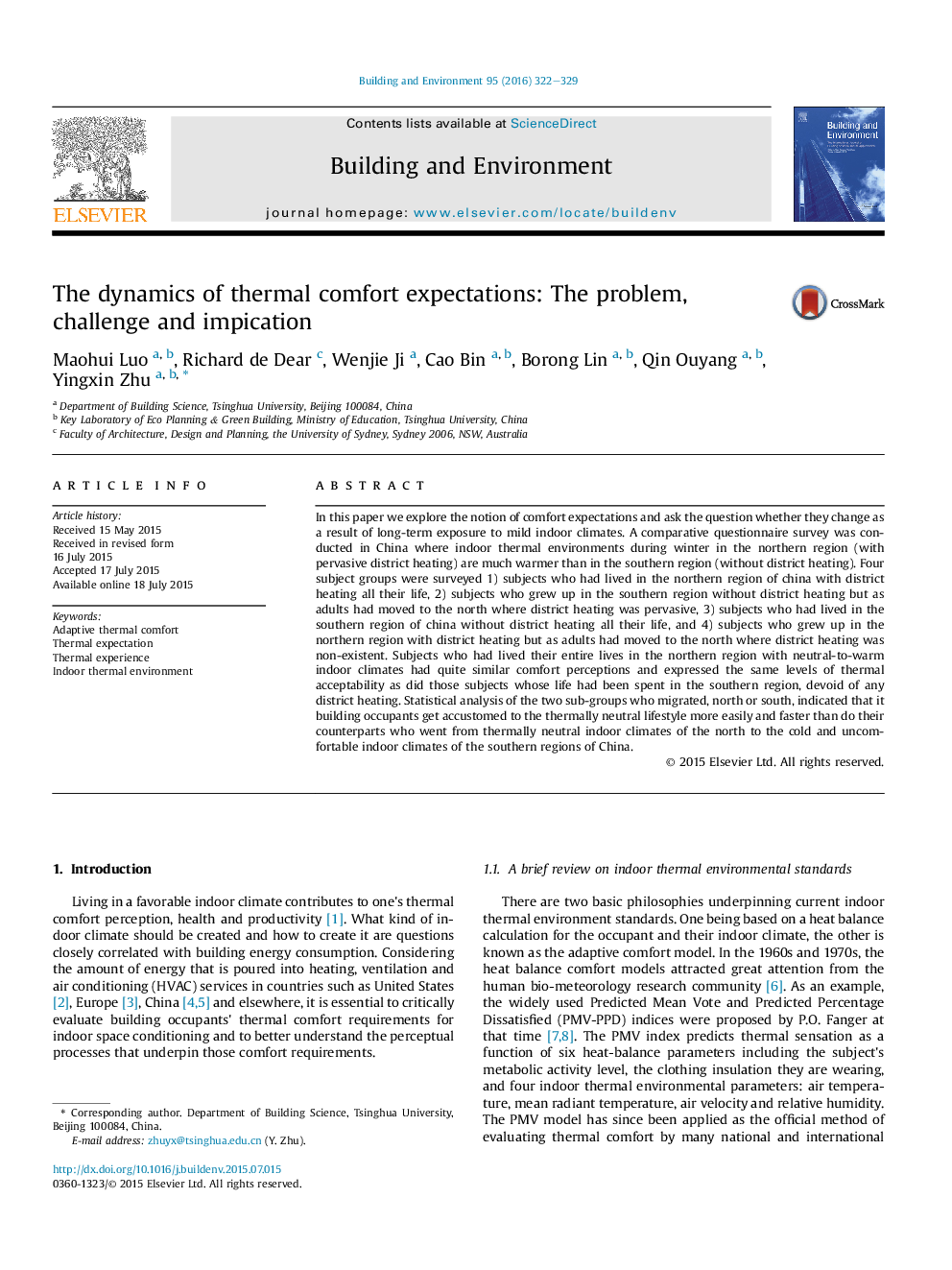| Article ID | Journal | Published Year | Pages | File Type |
|---|---|---|---|---|
| 247778 | Building and Environment | 2016 | 8 Pages |
•The study examines the impact of thermal history on comfort perception.•Evidences were collected to show the shifting thermal expectation.•Comfortable thermal experience will lift occupants' thermal expectation.•It's more difficult to readapt to unfavorable indoor climate.•The tightly temperature-controlled comfort standard should be reviewed.
In this paper we explore the notion of comfort expectations and ask the question whether they change as a result of long-term exposure to mild indoor climates. A comparative questionnaire survey was conducted in China where indoor thermal environments during winter in the northern region (with pervasive district heating) are much warmer than in the southern region (without district heating). Four subject groups were surveyed 1) subjects who had lived in the northern region of china with district heating all their life, 2) subjects who grew up in the southern region without district heating but as adults had moved to the north where district heating was pervasive, 3) subjects who had lived in the southern region of china without district heating all their life, and 4) subjects who grew up in the northern region with district heating but as adults had moved to the north where district heating was non-existent. Subjects who had lived their entire lives in the northern region with neutral-to-warm indoor climates had quite similar comfort perceptions and expressed the same levels of thermal acceptability as did those subjects whose life had been spent in the southern region, devoid of any district heating. Statistical analysis of the two sub-groups who migrated, north or south, indicated that it building occupants get accustomed to the thermally neutral lifestyle more easily and faster than do their counterparts who went from thermally neutral indoor climates of the north to the cold and uncomfortable indoor climates of the southern regions of China.
Graphical abstractFigure optionsDownload full-size imageDownload as PowerPoint slide
